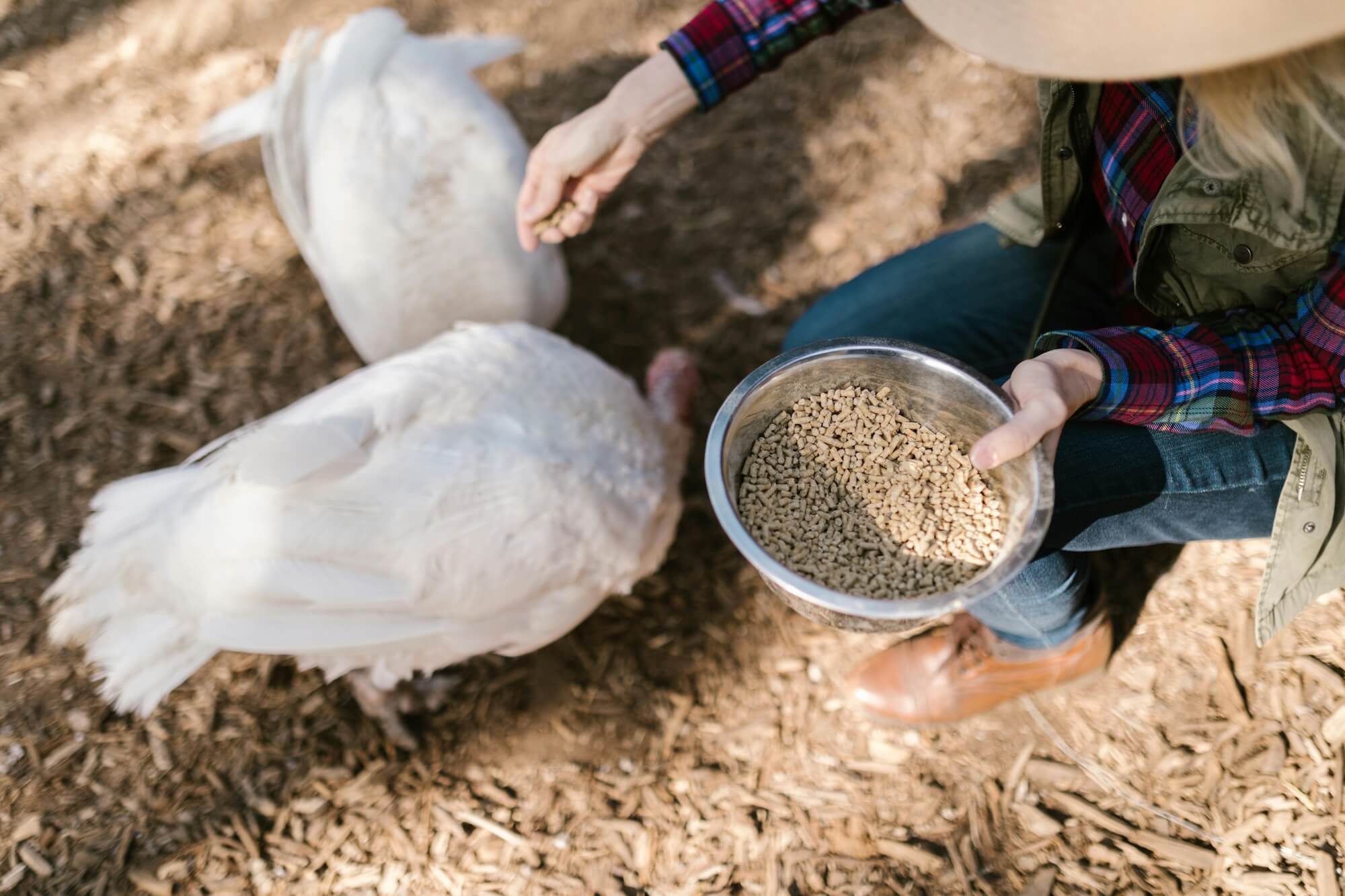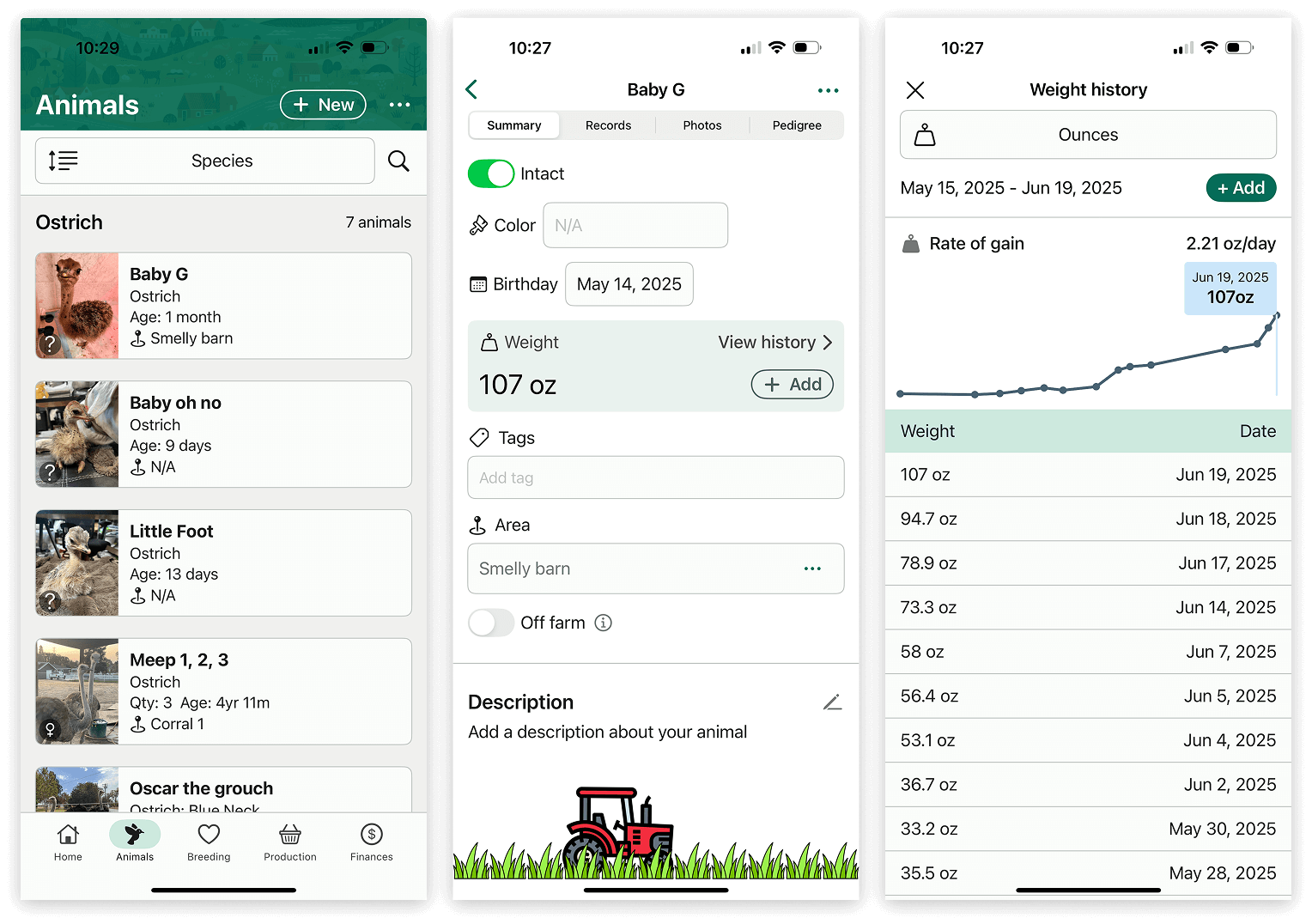Rate of gain, also known as average daily gain (ADG), is important for farmers raising animals for meat production. It measures how quickly an animal gains weight, usually expressing this in pounds or kilograms per day.

Tracking average daily gain (ADG) is essential for:
Whether you're raising cattle, pigs, sheep, goats, or poultry, knowing each animal's rate of gain helps you make informed decisions.
The formula for rate of gain is simple:
(750 – 500) ÷ 60 = 4.16 lbs/day
This animal gained an average of 4.16 pounds per day during the period.
The answer depends on your species and goals, but here are general guidelines:
Consistent weighing helps you monitor progress, adjust feed programs, and detect problems early.

Paper records are prone to error, and spreadsheets can quickly become a mess. That’s why we built FarmKeep—to make livestock tracking smarter and easier. Here's how to use the FarmKeep app to log weights and monitor rate of gain:
Understanding and tracking rate of gain is essential for any farmer focused on efficiency, profitability, and animal health. With FarmKeep, you can ditch the spreadsheets and manage your livestock weight history, health, and performance all in one place.
Ready to track your livestock’s progress like a pro?
Download FarmKeep today and start logging weights, calculating rate of gain, and unlocking powerful insights about your animals.
Producers buy young animals, raise them, and sell them to feedlots. To make a profit, they need to get the animals to weight quickly and efficiently.
📲 Tip: Use FarmKeep to log weights across groups and compare ADG between different pasture rotations or supplemental feed programs.
If you’re running a grazing-based operation, your pastures are your feedlot. Monitoring rate of gain helps you understand whether your forage is performing as it should.
🌿 Example: If ADG drops in a specific field, it may signal overgrazing, poor regrowth, or low forage quality.
If an animal slows or stops gaining weight, it's often one of the first signs of trouble.
🐂 FarmKeep lets you attach weight records to health logs so you can track medical history and growth side-by-side.
Before you commit to a new feed mix or supplement, you need to know whether it works. Tracking rate of gain gives you hard numbers to justify the cost.
💰 Use FarmKeep to track feed costs and weight data. Then, see which rations give the best results for your money
In species with short production cycles, every day counts. Tracking rate of gain helps you optimize your finishing schedule and keep feed costs low.
🐖 FarmKeep supports batch weight tracking for animals like broilers or market hogs, so you can manage entire groups with ease.
If you’re managing livestock across multiple pens, barns, or managers, rate of gain becomes a powerful benchmarking tool.
📊 With FarmKeep, you can group animals by pen, breed, or barn and compare performance across multiple dimensions.
Some meat processors or branded programs require animals to reach a specific weight within a certain timeframe.
🧾 Tracking ADG helps you deliver consistent results and avoid surprises at the processor.
Timing is everything when it comes to finishing livestock for meat. Harvest too early, and you sacrifice valuable weight (and revenue). Wait too long, and you’re throwing money at feed that isn’t adding muscle—just fat.
✍️ Example: If your steer gains 2.8 lbs per day and needs to reach 1,300 lbs, FarmKeep can help. You can use its tracking to find out when to schedule the butcher.
Not all genetics are created equal. Rate of gain helps you identify which animals pass on strong growth traits.
🧬 FarmKeep lets you link weight records to breeding history, so you can evaluate which matings produce the best gains.
For young people in 4-H and FFA programs, rate of gain is often a key component of their livestock project. Judges and records books frequently include ADG as part of scoring or evaluation.
✍️ A 4-H student can use FarmKeep to enter weights for check-in and weigh-in. They can also export the data to create an ADG chart for their final project book.
Learn more about how FarmKeep can help 4H students and families.
Paper records and spreadsheets can make tracking weight and gain a chore. With the FarmKeep app, you can:
✅ Record weight entries for individuals or groups
✅ Automatically calculate ADG between weigh-ins
✅ Visualize growth curves over time
✅ Compare animals, groups, or breeds
✅ Tie weight data to breeding, feed, and health logs